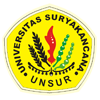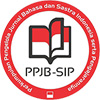- Focus and Scope
- Section Policies
- Peer Review Process
- Publication Frequency
- Archiving
- Publications Ethics
Focus and Scope
Dinamika: Jurnal Bahasa, Sastra, dan Pembelajarannya is a scientific journal published by Program Studi Pendidikan Bahasa dan Sastra Indonesia, Program Magister, Universitas Suryakancana, in cooperate with Perkumpulan Pengelola Jurnal Bahasa dan Sastra Indonesia (PPJB-SIP), that covers various issues related to the learning of bahasa Indonesia. The aim of this journal publication is to disseminate the conceptual thoughts or ideas and research results that have been studied in the area of Indonesian language-literature, art, and teaching.
Dinamika: Jurnal Bahasa, Sastra, dan Pembelajarannya is published with e-ISSN 2715-8381 (online) and DOI: https://doi.org/10.35194/jd.v1i1
Section Policies
Articles
Peer Review Process
Every article that goes to the editorial staff will be selected through Initial Review process by Editorial Board. Then, the selected article will go through Double Blind Peer Review Process by Mitra Bestari/peer reviewer(s) by. In this case, Mitra Bestari/peer reviewer(s) will rate each article from its substantial and technical aspects. Mitra Bestari/peer reviewers who collaborate with Dinamika (Jurnal Bahasa, Sastra, dan Pembelajarannya) are the experts in the learning of bahasa Indonesia and related issues. They are also experienced in the prestigious journal management and publication in national and international level. After going through selection and reviewing process, the article will be returned to the authors to revise. This process takes a month (the maximum time is four weeks).
Publication Frequency
Dinamika is published biannually, in February and Agust
Archiving
This journal utilizes the LOCKSS system to create a distributed archiving system among participating libraries and permits those libraries to create permanent archives of the journal for purposes of preservation and restoration. More...
Publications Ethics
Dinamika: Jurnal Bahasa, Sastra, dan Pembelajarannya publication ethics concerns with three principles underlying scientific publication ethics, including (1) neutrality, i.e. free from conflict of interests, (2) fairness, i.e. provision of authors’ rights, and (3) honesty, i.e. free from duplication, fabrication, falsification, and plagiarism.
There are four pillars of scientific publication that need to be referred to: (1) practices related to publisher tasks, that include establishing policy and publication programs, facilitating editors and reviewers work, respecting editors and reviewers decision, as well as determining sponsors and selecting the third parties. In publication practices, publisher is obliged to guarantee submissions which comply with the Scientific Publication Ethics as a whole. In terms of sponsorship, publisher needs to make sure that sponsors and the third parties do not complicate rewards and influence journal policy and programs; (2) practices associated with editors tasks, that include making a decision related to the publication of the manuscript, regulating reviews of the manuscript, as well as assuring the fairness of the results of the manuscript reviews, the confidentiality of the content, and protecting it from manuscript manipulation. (3) practices related to reviewers tasks, that include reviewing manuscripts either openly or in private, checking the accuracy and the authenticity of data sources, references, and concepts, as well as the objectivity of the content, and performing a neutral review. (4) practices related to authors tasks, that are to examine practices related to authors tasks including the authority of the manuscript, the statement of the originality of the manuscript, the detection of the manuscript duplication possibility, the acknowledgement of sponsorship, authority statements, and the statement of the sources of research funding.
Followings are rules and responsibilities of the publisher, editors, reviewers, and authors in detail.
General Duties and Responsibilities of Publisher
- Determine journal name, scopes, and accreditation status when necessary
- Select editorial board members.
- Define the relationship between publisher, editors, reviewers and other parties involved in the contract.
- Appreciate confidentiality for contributing researchers, authors, editors, and reviewers.
- Apply norms and conditions related to intellectual richness, especially copyright.
- Review the journal policy and deliver it to the authors, editorial board, reviewers, and readers.
- Establish a guide of ethics for the editors and reviewers.
- Publish journal articles regularly.
- Ensure the availability of sponsorship for journal publication.
- Build cooperation and marketing networks.
- Prepare permissions and other legal aspects.
General Duties and Responsibilities of Editors
- Meet the needs of readers and authors.
- Seek to improve the sustained quality of the publication.
- Apply processes to ensure the quality of the published manuscripts.
- Put forward freedom to express opinions objectively.
- Maintain the integrity of authors’ academic track.
- Submit corrections, clarifications, withdrawals, and apologies when necessary.
- Be responsible for the manuscript styles and format; however, the content and all statements are authors’ responsibility.
- Actively ask for opinions from the authors, reviewers, and members of the editorial board to enhance the quality of the publication.
- Encourage assessment for findings published in the journal.
- Support the initiative to reduce research and publication errors by requesting authors to attach Ethical Clearance form which has been approved by the Ethical Clearance Commission.
- Support the initiative to educate researchers about publication ethics.
- Review the effects of publication policy on authors and reviewers’ attitudes to promote responsibility and minimize errors.
- Be open minded towards new ideas or perspectives that might contradict their own.
- Make objective decisions by avoiding being persistent to particular opinions of editors, of authors, or of third parties.
- Encourage authors to revise manuscripts until they are published.
General Duties and Responsibilities of Reviewers
- Review manuscripts assigned by the editors and send the results back to them as the consideration for publication.
- Review manuscripts within the given time and according to the submission guidelines and scientific publication principles (data collection method, authors legality, conclusion, etc.).
- Re-review manuscripts which have been revised by the authors based on the predetermined standards.
- Encourage authors to revise manuscripts by providing review, suggestions, and recommendations.
- Keep the authors’ privacy by not publishing the results of the review, suggestions, and recommendations.
- Do not review manuscripts written by themselves, both directly and indirectly.
General Duties and Responsibilities of Authors
- Make sure the criteria of an author have been met
- Be responsible for the content of the manuscripts including method, analysis, discussion, and details
- Mention research resources (including funding) both from direct and indirect supports
- Explain research limitations
- Provide feedback to the results of the review on time and professionally
- Inform the editors about a manuscript withdrawal
- Appreciate requests from the publisher for not publishing findings through interviews or other media before the manuscripts are published
- Inform the editors about manuscripts that belong to a longitudinal, multidisciplinary study (or written from different perspectives)







